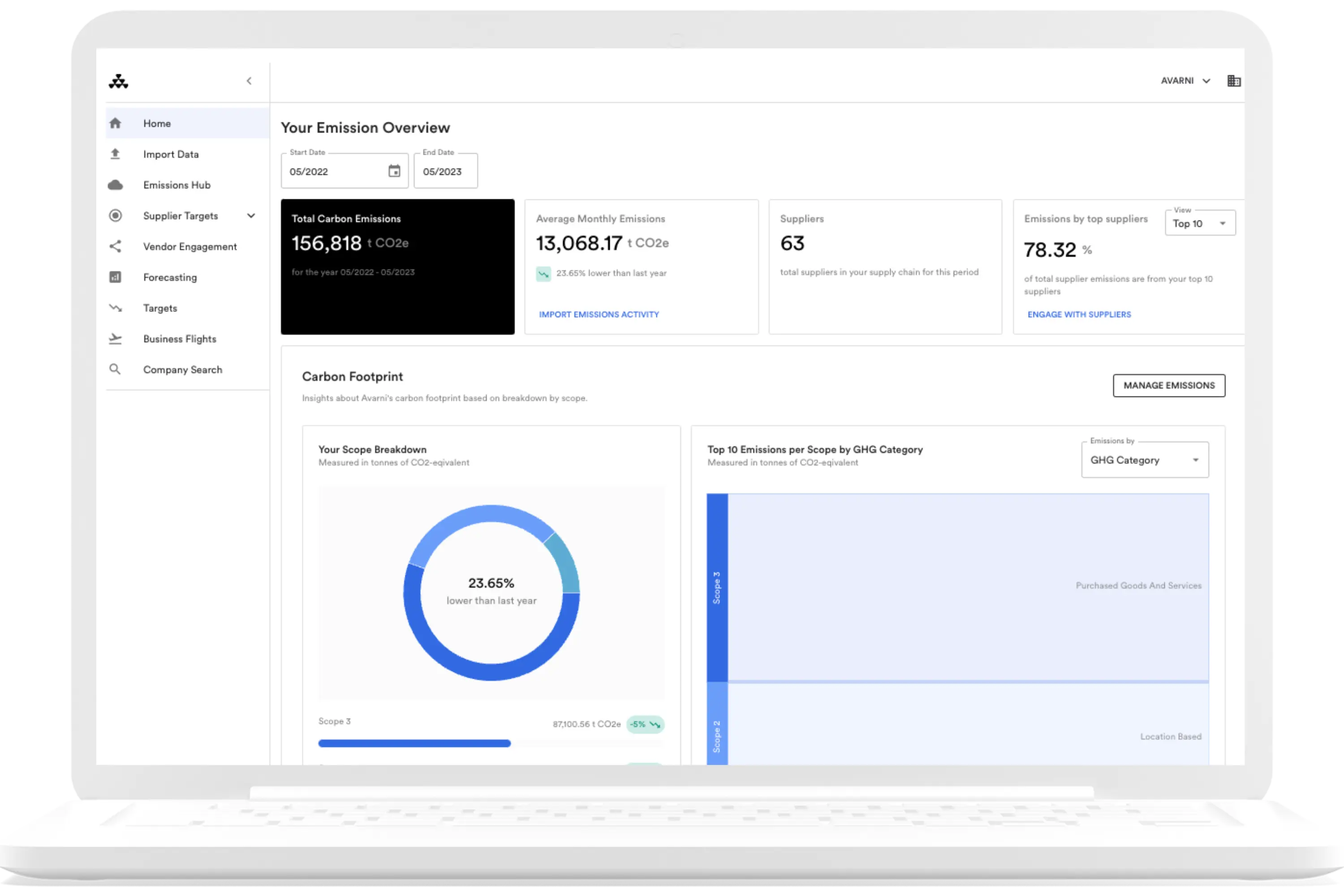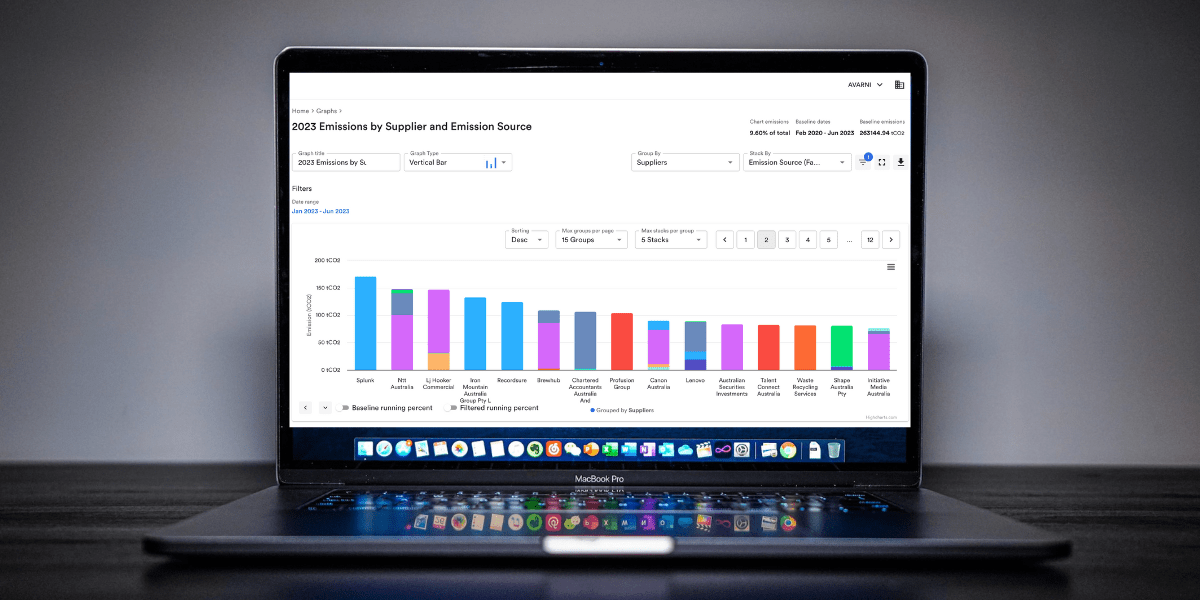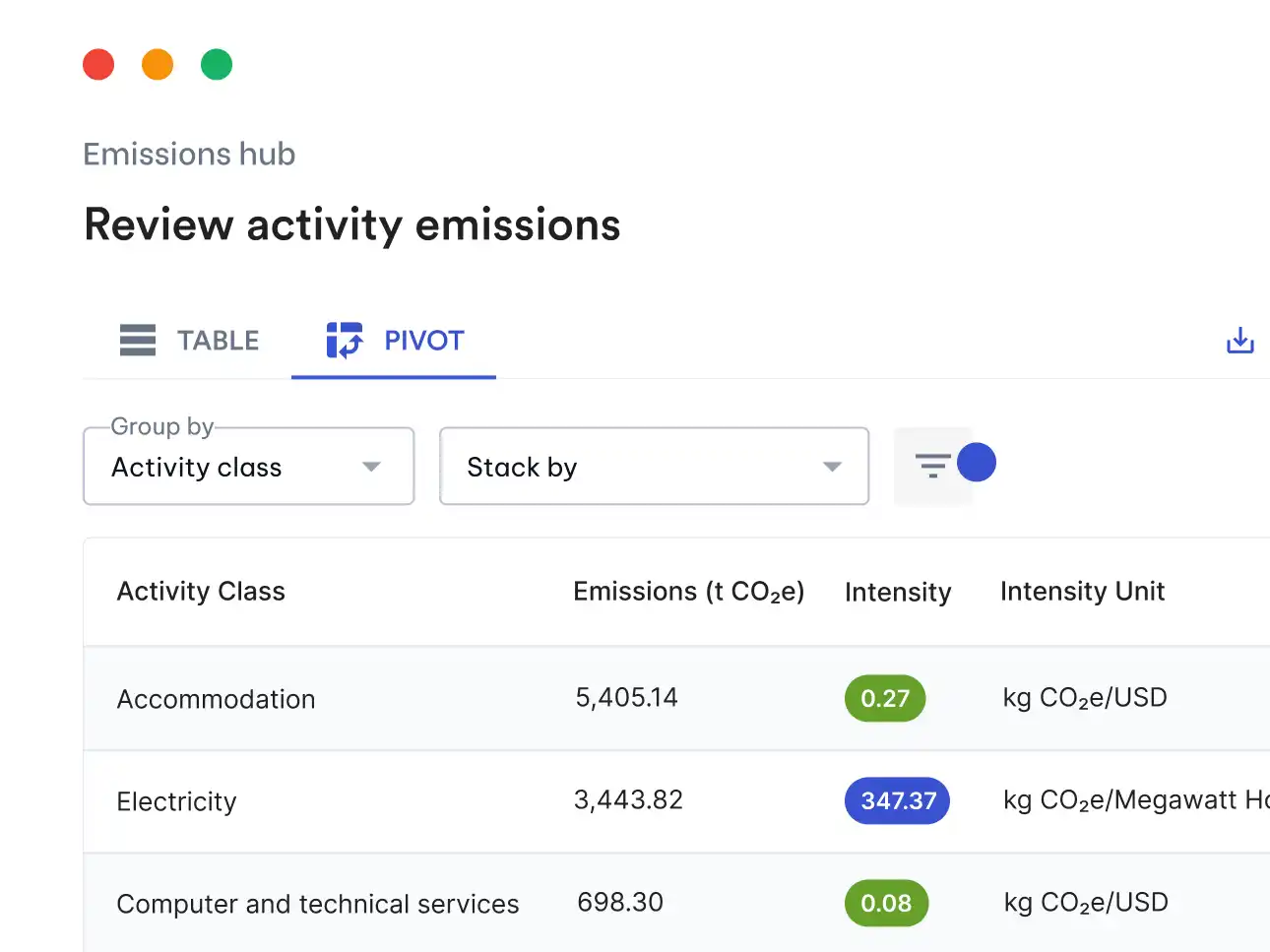In recent years, there has been a growing awareness of the environmental impact of companies and their supply chains. This is because over two-thirds of the planet’s carbon emissions are generated by companies, and more than 90% of these emissions are produced within their supply chains. As businesses strive to reduce their carbon footprint and become more sustainable, understanding how to calculate supply chain emissions has become crucial. In this article, we will delve into the process of calculating supply chain emissions, exploring both manual methods using the spend-based and activity-based approaches, and the advantages of leveraging technology to automate these calculations.
What are supply chain emissions?
Supply chain emissions encompass the indirect greenhouse gas (GHG) emissions linked to a company's activities that lie beyond its ownership or direct control. While the company has an impact on these emissions due to its involvement, they occur within the framework of its supply chain. This category includes emissions arising from purchased goods and services, transportation, business travel, and the waste generated during its operational processes.
Supply chain emissions, falling under the “Scope 3” category of the Greenhouse Gas (GHG) Protocol, present a challenging aspect of emissions tracking due to their widespread and complex nature. Nevertheless, their significance makes it imperative for businesses to diligently monitor and assess them.
By calculating supply chain emissions, companies gain valuable insights into emission hotspots and opportunities for reduction. This data empowers them to make informed decisions, paving the way towards a more sustainable future.
How to calculate supply chain emissions manually
Two primary manual approaches are commonly used to calculate supply chain emissions: the spend-based approach and the activity-based approach.
1. Calculate supply chain emissions using the spend-based approach
The spend-based approach estimates emissions based on the monetary value of goods and services procured from suppliers. It involves the following steps:
Step 1: Collect data — Gather procurement data from all suppliers, including the amount spent on goods and services and their associated emission factors. Emission factors are values that represent the amount of greenhouse gas emissions produced per unit of a product or service.
Step 2: Calculate emissions — Multiply the amount spent on each product or service by its respective emission factor. Sum up the emissions from all suppliers to obtain the total supply chain emissions.
2. Calculate supply chain emissions using the activity-based approach
The activity-based approach analyzes the specific activities involved in producing a product. Here's how it works:
Step 1: Identify activities — Map out all the activities involved in the supply chain, such as transportation, manufacturing, and packaging.
Step 2: Gather data — Collect data for each activity, including distances traveled, energy consumption, fuel type, and vehicle efficiency.
Step 3: Calculate emissions — Use emission factors or relevant calculation methodologies for each activity to determine the emissions produced.
Step 4: Sum Up emissions — Add up the emissions from all activities to obtain the total supply chain emissions.
How to choose between spend-based or activity based approaches
For companies new to calculating their supply chain's carbon footprint, the Greenhouse Gas Protocol recommends adopting the spend-based method as a starting point. This approach is relatively simple and requires less data, making it more accessible for beginners in supply chain emission calculations. Despite its use of generalized emission factors, the spend-based method offers a comprehensive overview of your company's emissions, allowing you to identify major sources of carbon emissions within your operations. While it may not be as precise as other methods, it still provides valuable insights into the most significant contributors to a company’s carbon footprint.
The activity-based approach provides a more accurate picture of the supply chain's environmental impact, allowing companies to pinpoint specific areas for improvement. However, it requires more extensive data collection and analysis, which can be time-consuming and resource-intensive.
How to leverage technology to calculate supply chain emissions
As businesses face increasing pressure to enhance sustainability and streamline operations, technology offers a powerful solution to calculate supply chain emissions automatically and effectively. Here are some ways technology like Avarni can help:
1. Automatic emissions calculations — Opting for a technology solution to calculate supply chain emissions offers a clear advantage: it automates the entire process, automatically computing your carbon footprint. By harnessing a purpose-built carbon accounting solution, you not only save time but also minimize the risk of errors that might arise from manual calculations. Embracing technology streamlines the emission calculation process, making it more efficient and accurate for your organization.
2. Data integration and management — Advanced software can integrate with various data sources, such as Enterprise Resource Planning (ERP) systems and supplier databases, to collect and manage supply chain data efficiently. For example, Avarni integrates with over 1,000 third-parties, making it easy to import your data from leading software platforms including NetSuite, Oracle, SAP, Microsoft Power BI, QuickBooks, Xero, and Coupa. This eliminates the need for manual data entry, reducing the risk of errors and improving data accuracy.
3. Machine learning and AI — Machine learning algorithms can analyze vast amounts of supply chain data, identifying patterns and trends that humans might miss. In addition, AI can help develop and refine emission calculation models by incorporating complex data sets and considering multiple factors that influence emissions. This results in more accurate and comprehensive emission calculations, even for complex supply chains.

4. Reporting and analytics — An effective software solution will provide you with user-friendly dashboards, visualisations, and reporting templates, enabling the generation of precise and standardized reports that align with industry benchmarks and meet regulatory requirements. Moreover, its advanced analytics capabilities, encompassing trend analysis, scenario modeling, and predictive insights, empower you to identify emission hotspots and optimize reduction strategies.
5. Supply chain engagement — Leveraging technology can significantly accelerate your supply chain emissions calculations by allowing suppliers to directly calculate and report their emissions within the platform. Gone are the days of chasing them down for data and manually inputting it into spreadsheets. This seamless process not only enhances their experience but also provides your organization with a comprehensive and real-time overview of emissions throughout your value chain. At Avarni, we strongly believe that effective carbon management hinges on vendor engagement. Therefore, we offer the convenience of onboarding your suppliers at no additional cost, fostering a collaborative approach to emissions reduction across your entire supply chain.
Get in touch with us to see how Avarni can help you to effectively calculate supply chain emissions throughout your value chain and drive positive environmental impact across your organization.





